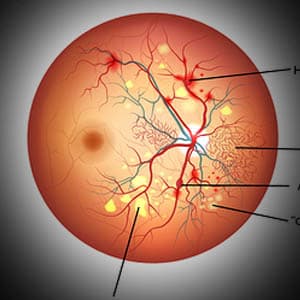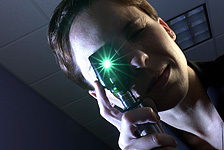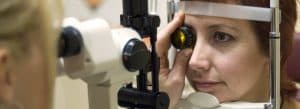Diabetics have a 20 times higher risk of suffering from vision loss
Diabetics are at risk for acquiring three primary eye conditions: cataracts, glaucoma, and diabetic retinopathy.
Other visual problems caused by diabetes include blurred vision, maculopathy, and proliferative retinopathy.
It’s critical to keep your blood sugar under control and have your eyes examined by an eye doctor at least once a year to avoid these sight-threatening diseases.
What is diabetes?
Diabetes is a condition in which blood glucose levels are abnormally high.
Insulin, a pancreatic hormone, helps our cells in obtaining energy from the glucose we consume. Diabetes is caused by the body’s inability to create or respond to insulin properly, resulting in an excess of sugar in the bloodstream.
Diabetes can cause potentially irreparable eye damage and poor vision over time. Taking care of your blood sugar levels and your eyes can help you avoid vision loss.
While everyone should have an annual eye checkup, diabetics should have more frequent tests.
6 Ways Diabetes Impacts Vision
1. Cataracts
Diabetics are more prone than non-diabetics to develop cataracts early in life, despite the fact that cataracts are a frequent and natural part of the aging process.
Cataracts, which are defined by a clouding or fogging of the lens within the eye, prevent light from entering the eye, resulting in blurred vision and glares. Cataract surgery is the greatest treatment option since it is both safe and effective.
2. Glaucoma
Glaucoma is a series of eye diseases defined by damage to the optic nerve. Glaucoma typically goes unreported until significant damage has occurred because it affects peripheral vision first.
Routine glaucoma screenings, on the other hand, can discover early warning signals, allowing early treatment to prevent disease development and visual loss.
Although there is no cure for glaucoma, most individuals are able to control their symptoms with the use of specific eye drops, medicine, and, on rare occasions, laser treatment or other surgeries. The sooner glaucoma is detected and treated, the better the prognosis.
3. Diabetic Retinopathy
Diabetic retinopathy happens when the capillaries in your retina weaken and subsequently balloon (microaneurysm) as a result of poorly regulated blood sugar levels.
Poor blood circulation at the rear of the eye leads to the formation of additional aberrant blood vessels, which bleed or leak fluid and, over time, can lead to scar tissue, retinal detachment, and even blindness.
There are often no symptoms until diabetic retinopathy has progressed to the point that patients notice spots and missing patches in their vision. Retinopathy can be treated with surgery and injections, but the best approach to keep the disease from developing is to have your eyes checked on a regular basis.
The good news is that with early detection, adequate diabetes treatment, and regular diabetic eye exams, diabetic eye damage can often be avoided.
Contact an eye doctor near you to schedule an appointment.
SEE RELATED: 5 Tips to Prevent Diabetic Retinopathy
4. Maculopathy
This occurs when the macula, the central part of your vision, is affected by diabetes.
The macula is the part of your retina that gives you the sharpest eyesight for reading, driving, and other tasks. Swelling might be minor and readily treated, or it can be more serious and difficult to treat.
5. Proliferative retinopathy
When cells at the back of your eye don’t get enough oxygen, new blood vessels begin to form. Since they’re delicate, they can bleed and cause a clot.
Scars may form, and your retina may tear away from the back of your eye. If it becomes disconnected, you may experience irreversible vision loss. This condition is sometimes treatable. Surgery and a laser technique that burns away the blood vessels are both options. In up to 50% of those with early retinopathy, it can avoid blindness.
6. Blurry Vision
If you notice that things are blurry, don’t go out and buy new glasses right away. It could just be a minor issue brought on by elevated blood sugar. It’s possible that the high sugar levels has caused your focusing lens to bulge, causing short-term blurry vision.
Once your blood sugar has returned to the normal range, your lens returns to the usual shape and the clear vision returns. However, if the blood glucose level remains high the vision will remain blurry.
LEARN MORE: Guide to Eye Conditions
If you have diabetes and have noticed any changes in your vision, contact an eye doctor near you.
Diabetics are at risk for acquiring visual problems including blurred vision, glaucoma, maculopathy, and retinal conditions.
It’s critical to keep your blood sugar under control and have your eyes examined by an eye doctor at least once a year to avoid these sight-threatening diseases.









